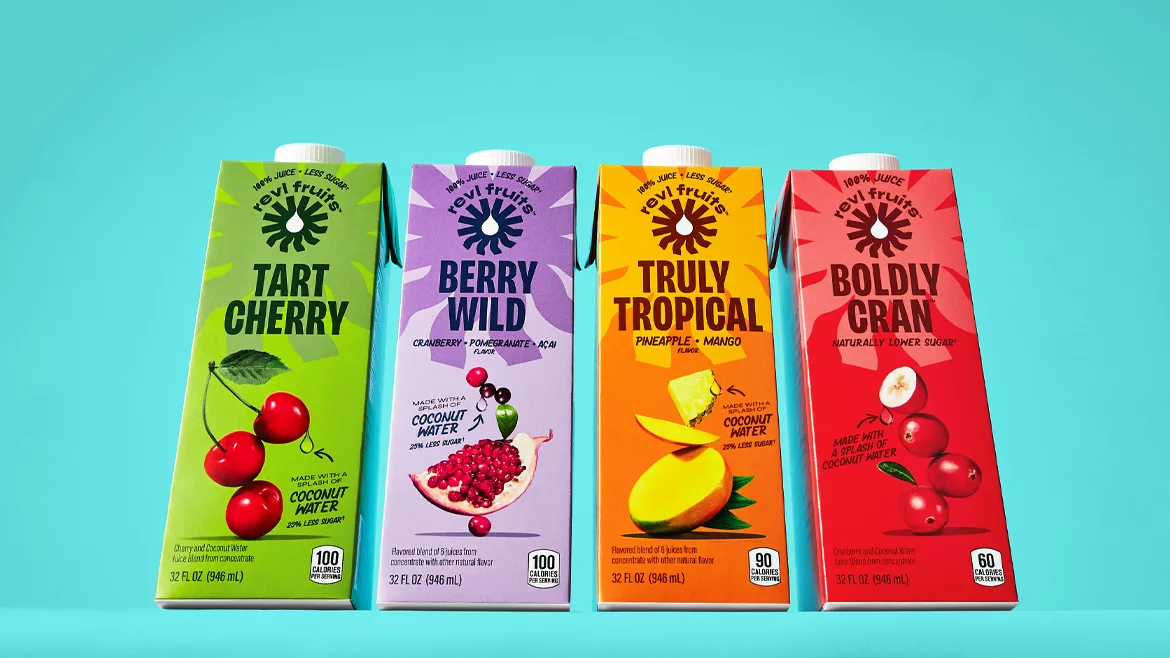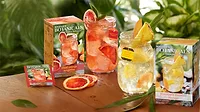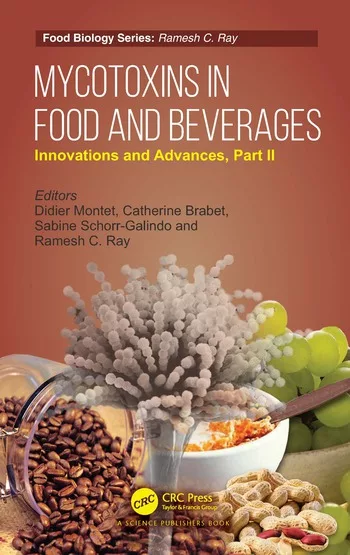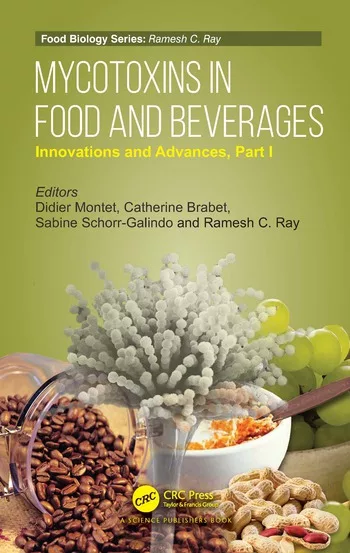Fruit blends appeal to consumers for flavor, health factors
Beverage-makers aim to deliver innovative flavor blends

Image courtesy of Revl Fruits
In the 2010 country song, “Keep Me In Mind,” the Zac Brown Band sings about a woman who is already taken. During the chorus, he asks her to keep him in mind as an option if things don’t work out. “Keep me in mind / Somewhere down the road you might get lonely / Keep me in mind / And I pray someday that you will love me only,” he sings.
In contrast to a love interest, consumers are keeping healthy choices in mind when it comes their drink selection.
Heidi Clark, national sales and marketing manager for Nampa, Idaho-based MicroDried, says that current consumer trends are focused on unique and innovative flavor combinations while keeping healthy options in mind.
“We continue to experiment with different fruits for an enjoyable drinking experience with all the nutritional values for exciting an unexpected combinations,” she shares. “For instance, our MicroDried’s citrus flavors — lemon, lime and orange — are the perfect complement to blueberries, strawberries or raspberries. Or add in one of our tropicals — bananas, pineapple or mangos — for a vacation island flair.”
Clark suggests that these combinations are ideal for a variety of drinks, such as teas, smoothies, protein shakes, energy drinks and seltzers.
Luca Da Ponte, sales director at Fort Lauderdale, Fla.-based Hosh International, a division of Brothers International Food, says that consistent interest in natural products with clean label claims is prompting producers to use fruit and vegetable juices or purees to flavor their products.
“In doing so, they can add claims such as ‘made with real fruit,’ ‘no sugar added’ and ‘plant-based,’” he notes. “The consumption of traditional carbonated sodas has been declining in favor of flavored water and other drinks that deliver some benefit to the consumer.”
Alexandra Kirsch, marketing associate at Allen Flavors, Edison N.J., points to health and wellness trends as influencing consumers to experiment with fruit blends.
“Combining different fruits creates refreshing drinks perceived as healthier alternatives to sugary sodas,” she says. “The second trend that is prompting experimental fruit blends is flavor variety. A growing demand for variety in beverage flavors is driven by consumers’ desire to explore new taste experiences. Combining different fruits allows beverage companies to offer unique and exotic flavor profiles that cater to adventurous palates.”
Kirsch adds that social media is a third reason for fruit blend experimentation. Platforms like Instagram and TikTok have popularized visually appealing and aesthetically pleasing food and beverage creations.
“Brands and consumers are inspired to experiment with fruit combinations to create visually striking and sharable content,” she says.
The perfect blend
Beverage-makers must take a careful approach when balancing the use of domestic and exotic fruits in a blend.
MicroDried’s Clark shares that exotic fruits are known to be rich in nutrients and minerals, reduce inflammation and lower blood pressure.
“Manufacturers are finding that, when blending with regular fruits, that it only increases the health benefits of their beverages and gives them an opportunity to market exotic-sounding options,” she explains. “This gives consumers a healthy options and, by balancing domestic and exotic fruits, can give manufacturers an exotic fantasy flavor drink at a lower price point.”
Hosh’s Da Ponte says that the popularity of berries, a product often recognized as domestic, has grown significantly over the past five years. Strawberries are the most popular, he notes, while blueberries, raspberries and blackberries are growing in popularity as well.
“At the same time, tropical fruits are also extremely popular — pineapple, guava, passion fruit and especially mango have seen a significant growth in the last five years,” Da Ponte adds.
Larisa Campbell, manager of research and innovation at Allen Flavors, considers blending domestic and exotic fruits to be a strategic balance.
“Many tropical fruits have a strong, impactful flavor profile, so incorporating domestic fruits, such as oranges, helps add juiciness and overall balance to a beverage,” she says. “Using domestic citrus fruits also helps connect and blend exotic fruit profiles, making them more appealing to a broader audience.”
Conversely, Campbell shares that adding in tropical flavors like lychee can help brighten a domestic flavor like blackberry and showcase the thoughtful strategy behind fruit blends.
Natural and organic trends also are impacting fruit blends.
Allen Flavors’ Kirsch says this influence has been significant, and affects everything from product development to consumer preferences.
“Brands are emphasizing organic certification on their labels to attract health-conscious consumers,” she explains. “Due to this, marketing campaigns often highlight the health and wellness benefits of consuming natural and organic fruit blends. Also, natural and organic ingredients are usually associated with higher quality and premium positioning.”
Brands using such ingredients in fruit blends can command a higher price point, Kirsch shares, which appeals to consumers who are willing to pay more for the products they perceive as healthier and more environmentally friendly.
“Overall, the natural and organic trends push the fruit blend industry toward more sustainable, health-conscious and innovative practices, ultimately benefiting the consumers and the environment,” she states.
Similarly, Hosh’s Da Ponte believes that these trends are seriously impacting fruit blends.
“Fruit and vegetables are intrinsically ‘natural,’ they have a good connotation with the consumer and are respected as ‘good for you,’” he notes.
MicroDried’s Clark also refers to the “good for you” demands of the consumer, adding that beverage-makers must be sure to satisfy all current demands.
“MicroDried’s products are 100% fruits and vegetables that have no artificial colors, flavors or preservatives and organic labeling takes it further with how farmers grow and process their fruits that are better for you and the environment,” Clark explains. “Ultimately, that gives consumers a choice when deciding on which beverage provides natural and/or organic fruit options.”

Favoring fruit blends
As consumer trends are ever-changing, so are their preferences for which fruit blends they prefer.
Allen Flavors’ Kirsch expresses that the most popular blends right now are berry mixes, as well as tropical fruit blends.
“These tropical fruit blends help consumers feel like they are on a tropical vacation year-round,” she says. “Better-for-you (BFY) fruit flavors continue to be trendy because consumers are interested in beverages that provide health benefits. This includes citrus flavors, such as lemon and orange, because of their immunity properties and elderberry combinations because of their antioxidants.”
These blends often combine sweetness, tartness and nutritional benefits, which Kirsch notes contribute to their popularity.
MicroDried’s Clark states that the company is seeing floral and citrus blends for refreshing drinks, while peach, blueberry and strawberry are more nostalgic flavors. She adds that tropical blends are popular with heat and/or herbs for cocktails or mocktails.
As for which beverage categories are most frequently utilizing fruit blends, Clark says there has been a “definite increase” in teas, smoothies, protein shakes, energy drinks and seltzers.
“Quick, convenient, easy-to-grab beverages are also in demand,” she adds. “Having flexibility to provide dried fruits in several forms to any beverage only adds to the flavor, nutritional value and overall taste satisfaction.”
Allen Flavors’ Kirsch says that several categories are using fruit blends due to their appeal in taste, health benefits and versatility.
“Some of the most active categories include juices; fruit juices often blend multiple fruits to create unique flavor profiles,” she explains. “Mocktails and alcoholic beverages utilize fruit blends for their flavor and visual appeal. Mocktails usually feature fresh fruit blends for a refreshing drink, while cocktails incorporate fruit blends as mixers or garnishes.”
Kirsch notes that fruit blends also are used in flavored iced teas and infused waters, adding natural sweetness and flavor without the need for additional sugar. She says energy drinks and sports drinks are using fruit blends, too.
“Some energy and sports drinks incorporate fruit blends for added vitamins, antioxidants and natural energy sources,” Kirsch adds. “ … Fruit-flavored sparkling waters and sodas often use fruit blends to create refreshing and lightly sweetened beverages.”
Hosh’s Da Ponte feels that all categories are using fruit blends, from premium beverages in the refrigerated section to center-of-the-store products. He suggests flavored water, probiotic drinks, smoothies and smoothie-like products are opting for fruit blends.
Going forward, Da Ponte expects that consumers will be interested in mango, passionfruit and other exotic fruits, as well as pomegranate, berries and other fruits high in antioxidants.
“The shortage of orange juice will also impact the consumption of other fruit juices, like apple, pear, pineapple and white grape,” he states.
MicroDried’s Clark shares that, in new product developments, anything that is nutrient dense, mood enhancing and sweet with less sugar will be pushed.
“Unique fruits are trending more, with Meyer lemon, wild blueberry, dragon fruit — something familiar paired with something unique,” she says.
Allen Flavors’ Kirsch expresses similar sentiments, noting that emerging fruits with well-known flavors are more likely to be successful because consumers have expressed interest in such innovation before.
“For instance, blends such as cranberry and dragon fruit have shown success, as well as guava, orange, strawberry and lychee,” she says. “There has also been growing interest in exotic flavors such as passion fruit, dragon fruit and kiwi. … You can also watch for more superfood blends, incorporating fruit such as acai and goji berries to appeal to health-conscious consumers looking for nutrient-dense options.”
Looking for a reprint of this article?
From high-res PDFs to custom plaques, order your copy today!









